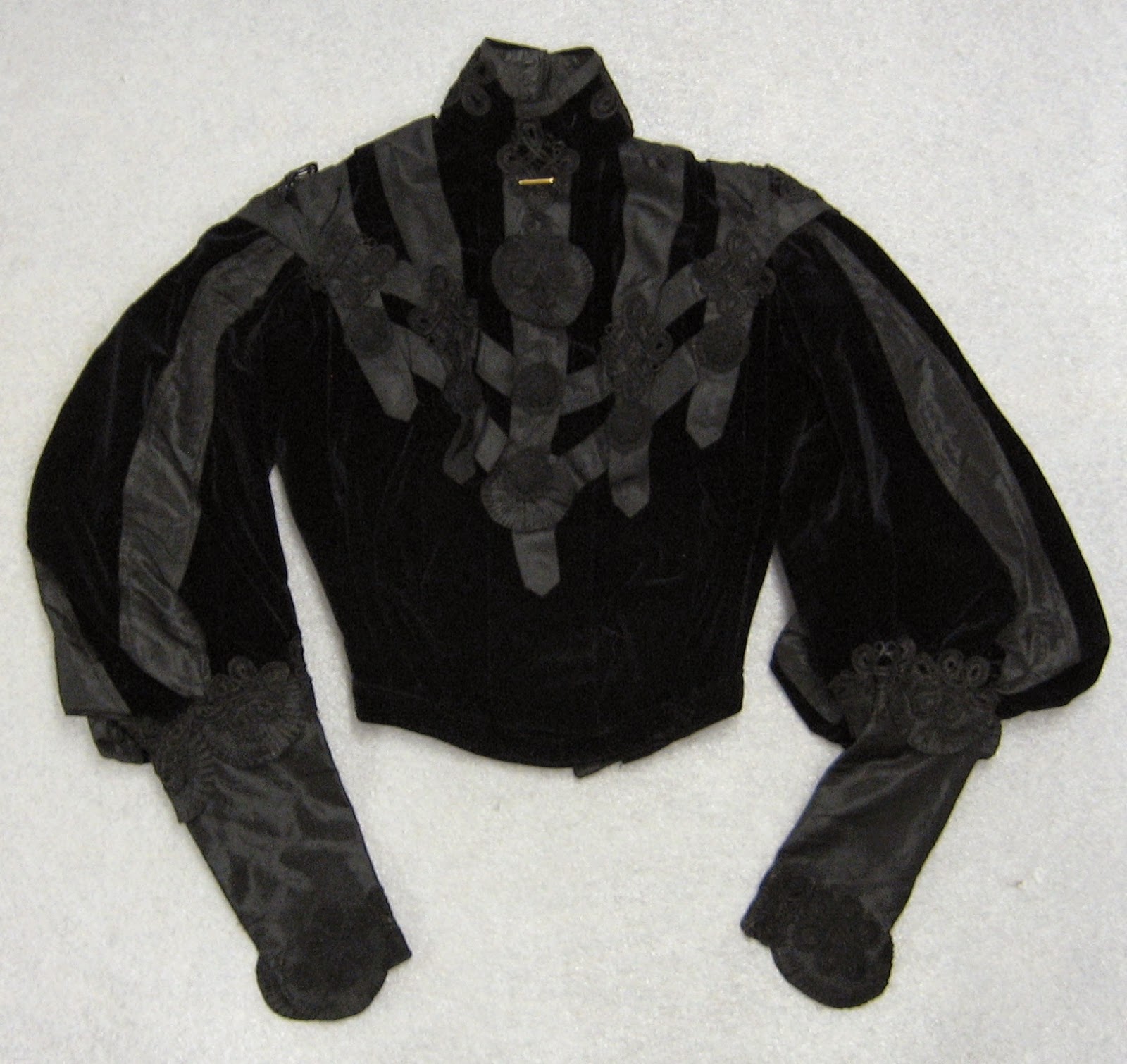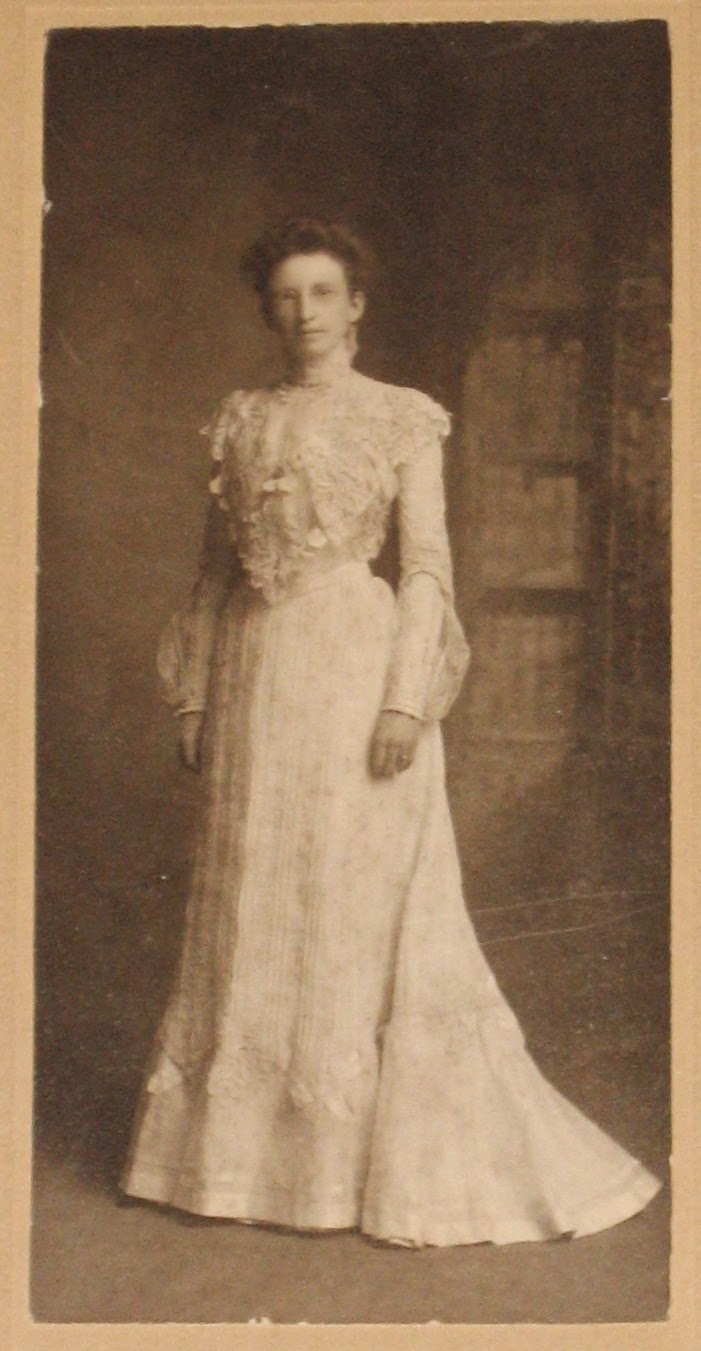As
the year is coming to a close, I’ve been thinking back on the new donations
CCHS got throughout the year. We
received 130 donations of objects and archival materials. That means that over the course of the year
we added 237 individual objects and hundreds of paper-based items like
photographs, scrapbooks, and documents to our collection. Each items helps us tell the story of Chemung
County. While all of the objects are
wonderful, I do have my favorites.
Three
Piece Traveling Dress, c. 1900
I
have always loved historic fashion. I
love the beauty of elaborate dresses and appreciate the skill that went into
making them. I love that clothing was
worn by a specific person, often for a specific event. So much can be learned from a garment and so
many stories can be told. This traveling
gown was worn by Helen Innes Mills around 1900.
It is made of black velvet with satin trim and has two different bodices
that can be worn with the skirt. Inside
one bodice is a tag that reads The G. E.
Weaver Co. Elmira, N.Y. In addition
to this gorgeous dress, we also have a picture of Helen. It is wonderful when we can actually see the
person who wore the historic clothing.
Police
Items from Both Ends of the 20th Century
This
year we received two donation, quite coincidentally, related to the Elmira
Police Department. One donation was of
items from the early 1900s that were owned by Detective Sergeant Charles
Gradwell. Sergeant Gradwell and Police Chief John J. Finnell were murdered
March 27, 1915 at a boarding house on Baldwin Street, Elmira. CCHS was given
items such as his Colt revolver, handcuffs, and night stick, as well as his
patrol diaries.
 |
|
Items from the
Holmes collection
|
Ku
Klux Klan Sword
 |
|
KKK sword with
inset detail photo of handle
|
Undergarments
from the 1950s and 1960s
Did
I mention that I love historic clothing?
Undergarments are a particular favorite of mine. I was thrilled to receive this donation
because CCHS does not have many undergarments from the mid to late 20th
century. Maybe people do not consider
things from that period as museum-worthy (how can something they wore be in a
history museum when they are still so young?) or perhaps there is some level of
embarrassment in donating your underwear for research and possible
display. Either way, I hope that more
people choose to donate all types of objects from the 1950s and 1960s and
onward so we can strengthen that portion of our collection.
Blue
Star Service Banner from WWII
 |
|
Albert Oberg’s
service banner
|





The personal dimension of this posting is charming, and the objects are fascinating.
ReplyDelete